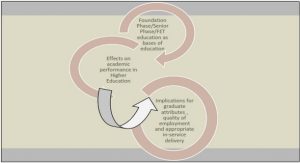Get Complete Project Material File(s) Now! »
The Position of Ordinary Church Members Through The Ages
Over the years we have become accustomed to the distinction between the clergy (KAEpOS) as leaders and ordinary church members (laity, congregation / Aaos), and the inferior – or at any rate subordinate – position of the latter. This does not apply to all churches, but it is true of most large denominations. Everyone is familiar with the distinction. It is remarkable that the same distinction is not made in the New Testament. Although there are references to spiritual leaders, elders, presbyters and the like, they do not belong to a superior order or occupy a special position in the church. In 1 Pt 2:5, 9, God’s people are called a « holy priesthood » (lEpaTEVIJ.U ayLOv) and a « royal priesthood » (~ua(AELOV lEpaTEVlJ.u). All believers are God’s priests. Another significant point is that the early church devoted comparatively little attention to church organization, since many Christians were expecting the second coming to happen any day. By the end of the first century, the expectation of an imminent second coming had begun to wane and the church started to organize for its earthly existence. Gradually, an ecclesiastic structure emerged in which the clergy increasingly took charge as leaders and the ordinary members became more and more passive. During the first centuries, the authority of the leaders increased and an ecclesiastic hierarchy emerged. At the head was the bishop, followed by a council of elders to advise him and, below them, the deacons were responsible for various ecclesiastic ministries (Von Campenhausen 1969:97). Hans Kung (1972:54) points out the striking parallel between the ecclesiastic hierarchy and the structure of the Roman civil service of those days.
From the third century onwards the bishops’ authority increased. In many of the church historical writings, one often reads of information on the role of bishops the image of a shepherd in relation to his flock – and the responsibilities to the flock. The shepherd is vested with divine authority and represents the Lord God: « The bishop is God’s mouth, and his decision has an authority like that of God » (Von Campenhausen 1969:240). He is described as high priest, Levite, prince, ruler, mighty king and after God, father of the church. The congregation is expected to honour the bishop, who is God’s representative, as they honour God (Von Campenhausen 1969:242). Cyprian even goes further, maintaining that there can be no church without a bishop. « Not only is the bishop in the church, but the church is the bishop. That is to say, without the office of bishop, there is no church » (Von Campenhausen 1969:169). By this time, the ecclesiastic hierarchy had become so established that it was taken for granted and nobody thought of questioning it. This hierarchy not only made a distinction among the clergy themselves, but also caused a wide rift to develop between clergy and congregation. The shepherd became estranged from his flock. Because the clergy were God’s representatives, a clear distinction between them and the congregation was required. The superior status of the clergy was taken for granted. The divide between the official clergy and the congregation widened during the Middle Ages. The church developed its own social hierarchy with special prerogatives, titles and immunities. This was when ordinary church members came to be described as « laity ». The word « laity » (or « lay person ») is derived from the Greek AUKoS’, meaning « belonging to the AGoS »’ ([God’s chosen] people). Eventually it came to mean an inability to join in the scientific and learned discussion and evaluation. Still later it acquired the connotation of ignorance (Kraemer 1958:47). During the first few centuries of the Church’s existence, the laity was not all that ignorant, for at that time the propagation of the faith and the expansion of the Church were tasks performed mainly by ordinary members. It was during the Middle Ages that the laity became the subordinate, passive component of the Church.
Submiting to One Another Because of Love
The communion of Christians is to lead its members to maturity. A sign of maturity is to fit into the due activity of each part by being subordinate to one another under the lordship of Christ. The foundational unit of this fellowship to reflect and teach this maturity comes from marriage. The husband and wife relationship, informed by Christ’s love, is the basic institution to reflect the love of Christ for the Church, which self-giving love is to characterize mutual subordination. Christ is the head of the Church and the Church, His body, is subordinate to Him. The reflection of this redemptive truth is accomplished by the wife’s subordination to her husband as head (Eph 5:22-24). Her subordination is not because of his masculinity as superior to her femininity but because the Lord commands it; it is her assigned role in marriage to help teach by action of life in a permanent situation of ayaTIT] love (1 Pt 3:1). The headship of the man is not founded on his masculinity; in fact, it is unfounded until he has given himself for his wife and cares for her as Christ exampled. Man does not accomplish this perfectly but in his effort to obey the impossible through Christ’s position of headship which a woman can trust and respect. Therefore, the husband is finally responsible to initiate and sustain the context of love in the husband-wife relationship. The wife has her role so that ayaTIT] love is seen in daily demonstrations and actual life situations. Their complementary functions are defined as oneness. Individual rights are not demanded but orderliness and responsibility are.
The mutuality of the sexes in a spirit of willingness to be subordinate is also taught by Paul in 1 Corinthians. This is to be true especially of the body of Christ which celebrates the Lord’s Table (1 Cor 10:24, 33). Men and women can pray and prophesy as they congregate (1 Cor 11:4, 5). The woman is a co-ruler with man (1 Cor 11:10-12). The woman is a co-worshipper with man (1 Cor 11:1316). This sets the context for asserting that all should seek the higher gifts (1 Cor 12:31). All have gifts to be used in building the Church. The scripture is well aware that this emphasis on mutuality can lead toward unisex or disregard of sexual differentiation. In Paul’s day the symbol of differentiation in the Church was a veil. He also regards women’s long hair a better symbol. He states there is no hard and fast rule as to the symbol used (1 Cor 11:16). Subordination required of every Christian begins with accepting oneself as God’s creation. The opposite extreme, flaunting one’s sexuality, is to be avoided also. The discipline of the Lord’s Table is to test oneself in regard to love of the brethren, measured by Christ’s love (1 Cor 11:27-29; 1 In 4:7-12). The fundamental expression and basic reflection of subordination is in the relationship of husband and wife reflecting Christ’s love for the Church. This informs the marriage partners of their roles and gives true meaning to their relationship. Christians should refer their « new creation » to the subordination to Christ. This informs all other relationships and thus creates a fellowship based on the principle of subordination. The difference of sexes adds emphasis to the principle of subordination in the Koinonia. Each one must learn to control sexual desire and to curb fleshly passion (1 Th 4:2-8). Love must be kept at full strength without wronging one of the fellow pilgrims in this matter of sex. There are two states to be recognized in regard to sexuality, that is, married and unmarried (1 Cor 7:32-34). ayanl1 love recognizes both states as legitimate. However, by reference to creation, it is presupposed that the ongoing of society will be through marriage. This is incorporated with the redemptive motif of the Church. In Christ’s body subordination is a principle of Koinonia. Marriage is for adults who have first learned how to be friends. This type of maturity is best served by a fellowship based on married partners, reflecting Christ’s love. Each knows personally the subordination of love so each can model the respective roles of their sexuality in the permanent relationship of marriage. Without Christian homes Koinonia will never develop according to Christ’s pattern of ayanl1; subordination will not be taught by forceful, meaningful example. Any other construction of Koinonia will not be Christ-centred and ordered.
CHAPTER 1- INTRODUCTION
1.1. Hypothesis of this Analysis
1.2. Research Methodology
1.3. Definitions
1.4. Outline
1.5. Limitations to this Study in Missiology and the Role of the Laity
CHAPTER 2 – THE IMPORTANCE OF THE LAITY IN THE LOCAL CHURCH
1 THE BODY OF CHRIST – THE CHURCH
1.1. The Position of Lay Members in the Church
1.2. The Need for a Sound Ecclesiology (Doctrine of the Church)
1.3. Ecclesiology in this Case Refers Primarily to the Local Church
1.4. The Church is Distinguished by Kerygma
1.5. The Church is Distinguished by Koinonia
1.6. The Church is Distinguished by Diakonia
1.7. The Church is Distinguished by Worship (Leitourgia) (AuTovpy(a)
1.8. Mission
1.9. People Ministry
1.10. The Order and Arrangement of the Local Church
CHAPTER 3 – THE STATUS OF THE LAITY IN THE CHURCH IN SOUTH AFRICA
1 BACKGROUND OF INFORMATION
2 OUTCOME OF QUESTIONNAIRES COMPLETED
3 INSIGHTS FROM THE INFORMATION COLLECTED
CHAPTER 4 – AN OVERVIEW OF THE CURRENT STATUS OF THE BAPTIST UNION OF SOUTHERN AFRICA CBUSAl.
1 BACKGROUND OF THE BAPTIST WORK IN SOUTH AFRICA
2 BACKGROUND AND METHOD OF INFORMATION COLLECTED
3. RESULTS OF THE INFORMATION AND STATUS OF THE BAPTIST UNION OF SOUTHERN AFRICA (BUSA)
4 IS THE BUSA A MISSIONS-MINDED CHURCH?
CHAPTER 5 – THE CHURCH’S ACTIVE ROLE IN THE CHRISTIAN MISSION FOR THE PURPOSE OF FULFILLING THE GREAT COMMISSION
1 BACKGROUND INFORMATION
2 THE WITNESS OF ALL CHRISTIANS IN THE WORLD
3. THE RELATIONSHIP BETWEEN THE SPIRITUAL GIFTS AND THE OFFICES IN THE CHURCH
4. NEW POSSIBILITIES OF THE CHURCH (Missional Member MinistryMMM)
5. THE FOURFOLD CHALLENGE OF MISSIONS AT THE START OF THE TWENTY-FIRST CENTURY
CHAPTER 6 – CONCLUSION AND PROPOSAL FOR A WAY FORWARD
1 THE NEED TO REDISCOVER THE PRIESTHOOD OF ALL BELIEVERS
2 THE IMORTANCE OF LOCAL CHURCHES
3 ISSUES TO BE ADDRESSED BY THE BUSA
4 FUTURE RESEARCH






